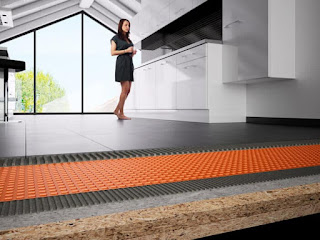Search This Blog
Most Popular
Categories
- Building Construction (87)
- Building Materials (85)
- Columns (2)
- Concrete Beam (3)
- Concrete Construction Techniques (6)
- Concrete Mix Design (14)
- Concrete Repair (14)
- Concrete Slab (11)
- Construction Equipment (17)
- Construction News (7)
- Design of Structures (18)
- Engineering Drawing (1)
- Estimation (3)
- Geotechnical engineering (26)
- Highway Engineering (11)
- Innovations (34)
- Material Testing (11)
- Matrix Analysis of Structures (2)
- Mechanical Engineering (3)
- Strength of Materials (2)
- Structural Analysis (13)
- Structural Design (24)
- Structures (17)
- Transportation Engineering (9)
What is Thinset Mortar and Where is it Used?
 |
| What is Thinset Mortar and Where is it Used? |
Types of Thinset Mortar
- Unmodified Thinset
- Modified Thinset
Unmodified Thinset Mortar
Modified Thinset Mortar
Difference Between Unmodified Thinset Mortar & Modified Thinset Mortar
|
Unmodified Thinset
Mortar |
Modified Thinset
Mortar
|
|
Unmodified mortar
shrinks that result in cracks. |
Modified thinset does not
shrink as much as unmodified mortar and results in fewer cracks. |
|
Uses natural moisture
to create interlocking bonds for security and stability. |
Modified thinset has
extra additives to sustain the moisture content and interlocking crystals to
secure the bond between the tile and substrate. Longer the moisture stronger the
bond. |
|
Requires less curing
time compared to modified thinset |
Modified thinset is rich in moisture that requires air to conduct evaporation and thorough
curing time when compared to unmodified mortar. |
How to Choose Between Modified and Unmodified Thinset Mortar?
|
Applications of Unmodified Thinset
Mortar |
Applications of Modified Thinset
Mortar
|
|
Laying tiles on an
impervious installation membrane, especially waterproof applications and flooring with waterproof underlayments.
|
Installation of porcelain
tiles and glass tiles |
|
Using as a mortar
layer between two impermeable membranes (sandwiched) where drying occurs only
through open grout joints. (Prodeso)
|
Installations over
plywood substrates |
|
Installation of ceramic
and natural stone |
Luxury stones and tile installations, as they are easy to work with. |
 |
| Tiles Installed Over Uncoupling Membranes |

0 Comments
Commenting Spam Links Are Against Policies